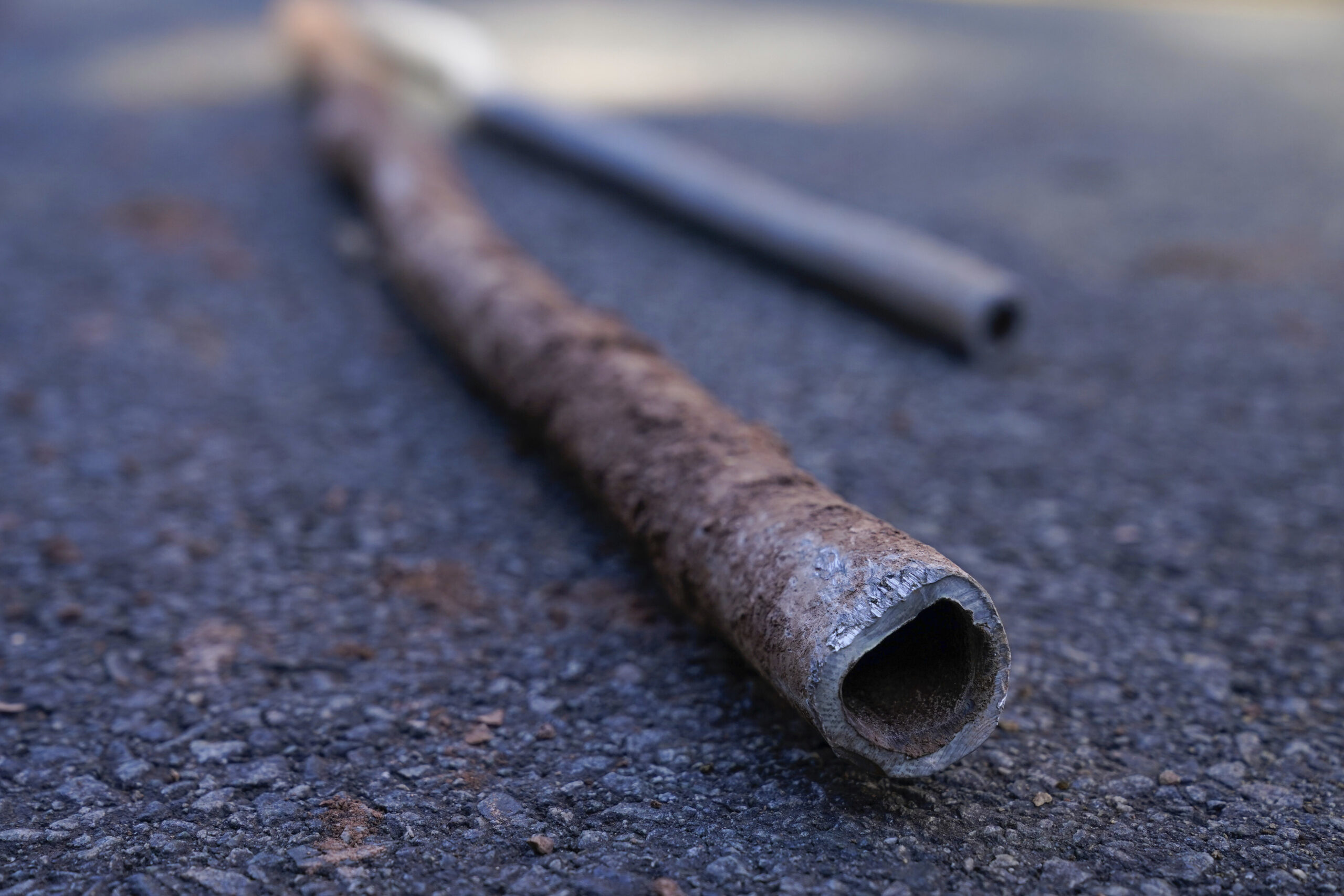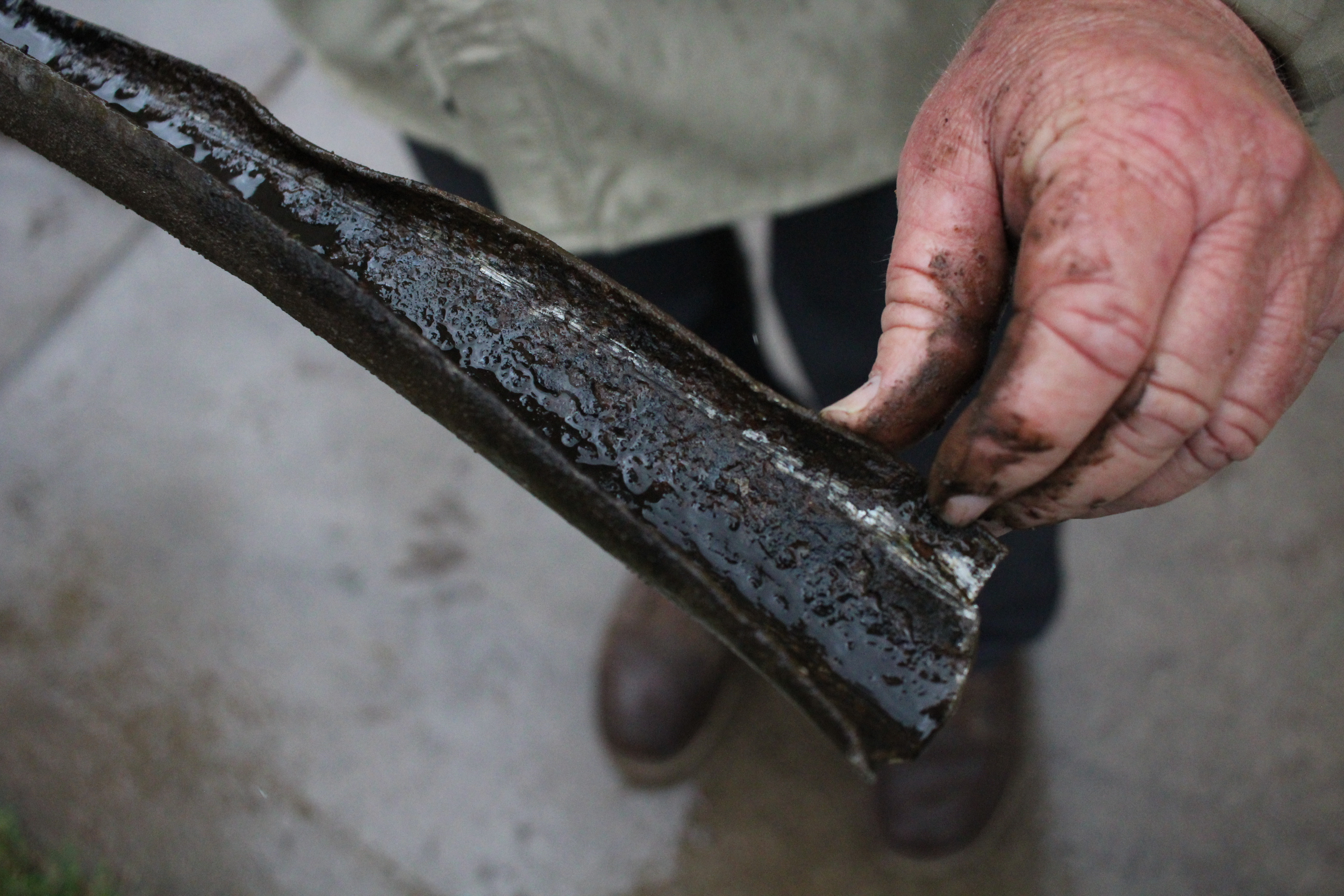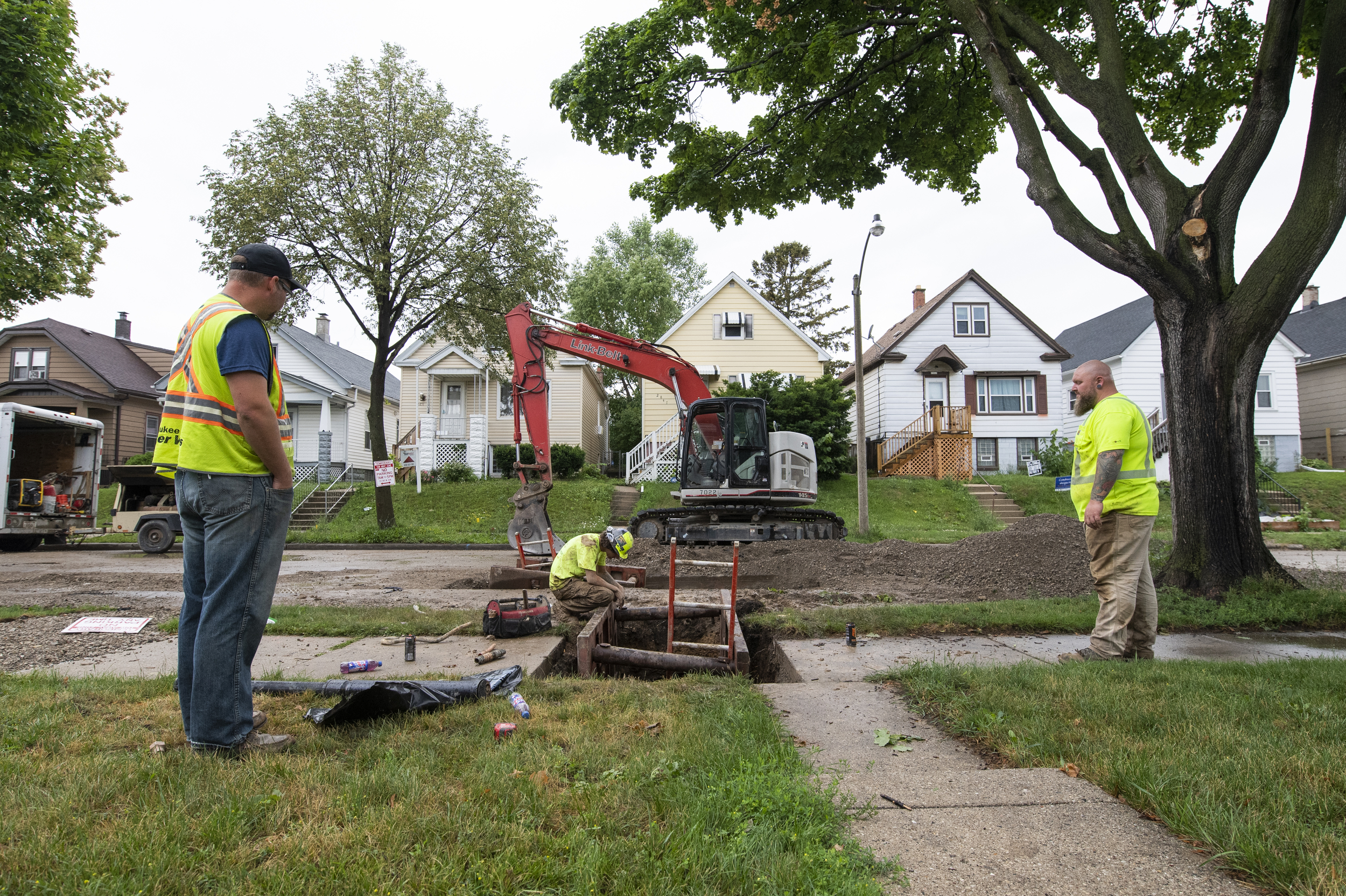More of Wisconsin’s lead service lines were removed or turned off in the last five years than in the previous two decades, according to a new report by the Wisconsin Policy Forum. At the current pace, Wisconsin’s water utilities could replace all of their lead service lines over the next two decades, the report says.
Lead author Tyler Byrnes said since local, state and federal officials have taken notice of the dangers of lead in drinking water, progress has been made.
“Between changes in policy to make replacing these things easier, the addition of federal funds and local funds to address these sorts of things, we can really start to make a dent in an infrastructure problem like this,” Byrnes said.
Stay informed on the latest news
Sign up for WPR’s email newsletter.
The main source of lead poisoning is paint and dust, followed by water. According to the U.S. Environmental Protection Agency and Centers for Disease Control and Prevention, lead is particularly harmful to children as they are still developing. Even low levels of lead in children’s blood can result in behavior and learning problems, hearing problems and anemia.
Milwaukee area has high percentage of lead lines
Despite the progress, Byrnes estimated more than 158,000 lead service lines remain across the state. The EPA ranks Wisconsin 10th nationally in terms of the number of lead service lines still in use.
The bulk of remaining lead lines are concentrated in the southeastern part of the state, with the village of Shorewood having the greatest share of lead lines at about 80 percent.
Byrnes said the challenge facing Shorewood is that it’s hard to find and evaluate the service lines since they were built underground decades ago, before the EPA banned them in 1986.
Leeann Butschlick, the village’s director of public works, says much of its infrastructure dates back to the first half of the 20th century when much of Shorewood’s housing stock was constructed. She said that makes replacement an intensive and comprehensive effort.
“If we’re looking at an 80 to 90-year-old segment of water main, and we start to punch dozens of holes into it, (it’s) probably not gonna end well for any of us,” Butschlick said.
A plan to replace the village’s lead service lines over the next two decades was adopted in late 2022 and implemented this year. Butschlick said the village is on track to accomplish the goal.
“It’s about providing safe, clean drinking water. So that obviously is a priority,” Butschlick said.
According to the policy forum report, 44 percent of the state’s known lead water service lines are treated by the City of Milwaukee Water Works. The size and scale of the lead service lines in the area make execution time-consuming and expensive, Byrnes said. Only 9 percent of its known lead lines have been replaced or shut off since 2018, according to the report.
According to Milwaukee Water Works, the city is on track to set a personal record this year for the most lead service lines replaced or shut off in one year. But Byrnes said Milwaukee will have to increase the pace of the project to meet its goal of eliminating the 70,000 known lead service lines in the next 20 years.
The city plans to do this next year by contracting out its administrative services. Milwaukee Water Works spokesperson Brian Rothgery said delegating some of the work will speed things up.
“Every service line replacement is its own engineering project,” Rothgery said. “A consultant will significantly increase our capacity.”
Byrnes said cost is one of the biggest hurdles in addressing the progress. The Policy Forum report estimates it could cost water utilities between $500 million and $600 million to replace every lead service line they own in the state.
“(Service lines) often run under streets, under people’s yards and so addressing it is going to be very disruptive and expensive going forward,” Byrnes said.
Since 2016, a federal pilot program and congressional action together have provided $90.6 million to Wisconsin water utilities through forgivable loans to replace the customer portion of lead service lines.
The federal government has also committed to funding lead service line replacement through the Bipartisan Infrastructure Law of 2021. Wisconsin can expect to receive $373 million in funding over the next several years for lead line replacement, for both utility and customer-owned service lines.
“I can see arguments for why we’d want to address this problem more quickly. But I think a 20-year time horizon for a massive infrastructure project like this is pretty reasonable,” Byrnes said.
No elevated lead levels found in Stoughton after 2021 service line replacement
Some Wisconsin cities have successfully replaced or shut off all known lead service lines.
Stoughton, a city in Dane County, replaced all of its 703 known lead lines in October 2021. Since then, testing did not find any elevated levels of lead in any of the water sampled.
The final cost for the replacement program was $5.17 million. The project was funded through the Safe Drinking Water Loan Program at the Wisconsin Department of Natural Resources and COVID-19 relief funding the city was allocated.
Brian Hoops, assistant director of Stoughton Utilities, said the company completed the project in seven months due in large part to the DNR grant which deflected costs away from homeowners.
“It’s a good feeling to know it’s out of the ground. It’s a good feeling to know that we don’t have that hanging over our head as a future budget item that we have to plan for,” he said.
Wisconsin Public Radio, © Copyright 2025, Board of Regents of the University of Wisconsin System and Wisconsin Educational Communications Board.



